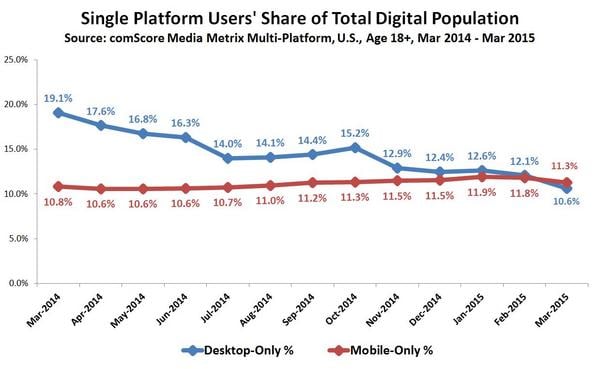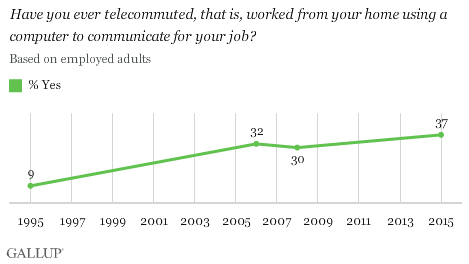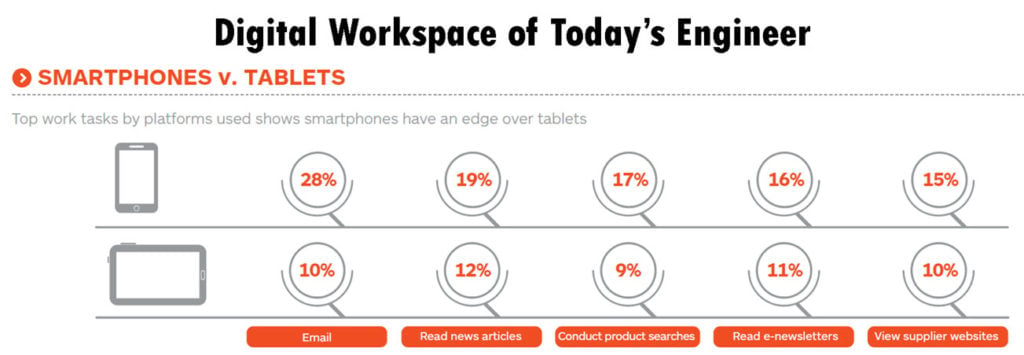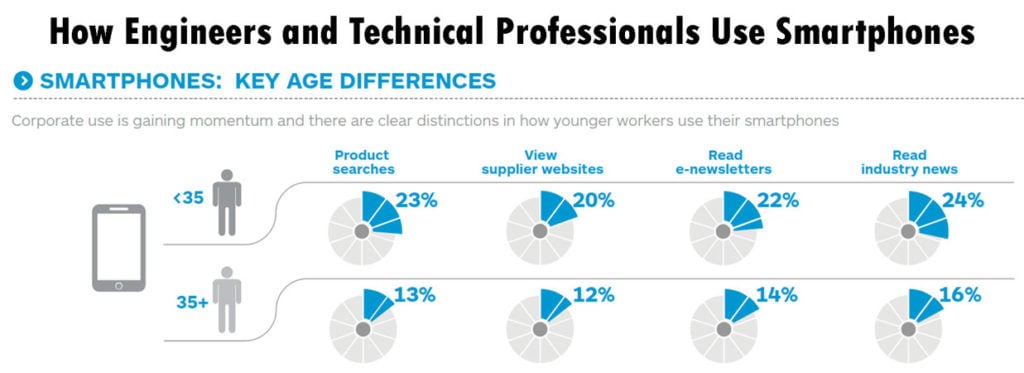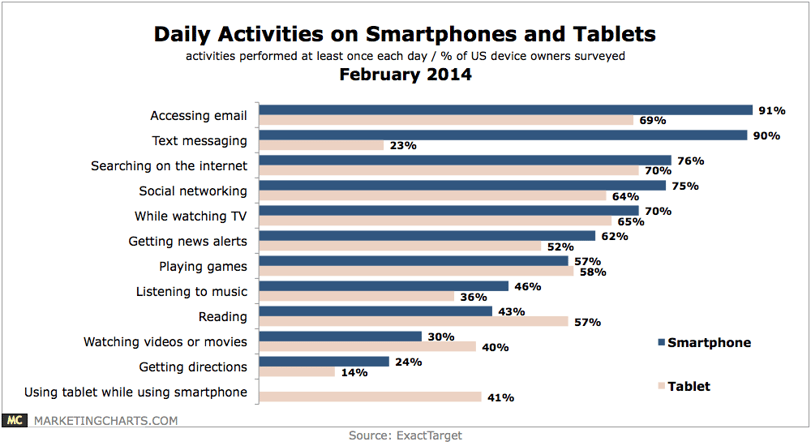This post is authored by Joel Don, ISA's community manager. Connect with Joel at LinkedIn.
Chances are you are reading this blog post from a smartphone or tablet. How do I know? Easy. A quick check with Google Analytics reveals that nearly 50 percent of the automation and control industry visitors to this site are using some type of portable computing device with Internet access.
Industry analysts had been predicting that mobile Internet users would eventually overtake the desktop. In fact, serial entrepreneur Jacky Chou from Indexsy.com made the claim as early as 2015, that Mobile would become the leading method of search. According to comScore, mobile surpassed desktop usage in the U.S. in March 2015 as the primary gateway to the Internet. Analysts expect the trend to continue, as people cut the digital umbilical to their desks and opt to access the Internet from any location at any time.
Increasingly, people prefer to access the Internet on the go or in places where using a desktop or notebook computer simply isn’t convenient or practical, such as at a coffee shop, restaurant, in a meeting or between meetings, at the airport or train station, in a car or bus, or on a subway. We're in an era of getting the job done, and getting it done now. In many cases your physical location is a secondary concern, especially considering surveys showing a significant growth of remote workers and telecommuters during the last two decades.
A slight twist in the trend: The jury is still out on whether phones, tablets and dedicated e-readers will replace the printed book. It seems that even young people raised in the digital era may actually prefer ink on dead trees. Some of the reasons printed books may have a longer shelf life than anticipated are directly related to the challenge of marketing to mobile device users. Tablets and phones offer numerous distractions, reducing comprehension levels when readers click away to read email, browse web pages and update their social media status. Printed books force the reader to focus. Marketing in an era that enables people to digitally hopscotch is a challenge. I'll offer some tips shortly.
The general consumer shift to mobile devices is an important heads up for industrial marketers, who might assume that automation executives, engineers, plant managers and factory technicians remain wedded to traditional computing platforms. In fact, production facilities and factory floors are being tuned for the mobile era, with a growing number of applications designed for remote monitoring and management in process control industries.

So with this shift toward mobile access, it's probably time for you to review your web analytics for the percentage of smartphone and tablets that are accessing your industrial business landing pages. If the numbers reveal visits are trending towards handheld devices, you'll need to reassess your messaging and graphics to ensure marketing content is optimized for people in motion.
It's also important to remember you are marketing to the distracted generation. A 2015 study found that 55 percent of American workers prefer to communicate with friends over the Internet. The survey also noted 68 percent of respondents said they didn’t finish work because they were checking email, browsing the web and engaging on social media. That means your content is highly vulnerable to the delete button or high bounce rates if there isn’t a compelling reason to stay.
The shift to mobile means focusing on copy optimized to be noticed, consumed and acted upon. It also means carefully choosing images to accompany your text to enhance the key takeaway messages delivered in the often smaller format of a mobile device.
It should not be a surprise that email is the top application for mobile devices. Email marketing ranks as one of the most effective means of reaching and converting customers and prospects. Have you optimized messages being delivered to your email marketing lists as well as to your "cold call" list of new prospects?
In a nutshell, here's the email marketing challenge to this noisy, distracted environment: You have very little time to grab someone’s attention. Studies show each email gets a few seconds attention, mixed with distractions from audio, video and environmental sources. You can't compete in this marketing competition if your content is not optimized for mobile. Here are a few suggestions for email marketing and social media promotions to help you maximize the opportunity and minimize the potential for a "bounce":
- Let the reader know exactly what they are going to get. That means article titles, headlines and email subject lines are more important than ever. You can’t afford to be cute with headlines; forget about channeling Hemingway. The Sun Also Rises is a great literary title, but it could be risky as a headline and fall flat with search engines.
- Keep it short. Since more than 50 percent of your email marketing will be viewed on smartphones, remember to keep the subject line short, less than 50 characters. Phones may only be able to display five to seven words, so make sure to pre-test your subject lines on different phones and tablets.
- Don’t over-promise. Your compelling marketing message needs to deliver on the promise. You may not get a conversion today, so you want to ensure that your pitch will pave the way for the prospect to open your content the next time. Make sure the content was worth the open, worth the time.
- Personalize the message. Email should come from you or a real person, and keep it professional. Forget about using noreply@ or an anonymous return address. You want to eliminate all marketing friction if a customer or prospect simply wants to hit reply for an immediate response.
- Leverage your mail list. Use the email recipient's name (get the name spelled right!), and mention the person’s business or company affiliation. Don't have that information? Head over to LinkedIn, spend the time, and do the research. Make your mailing list shine. After all, if you want someone to give your message a few minutes, spend the same or more time to earn it.
- Front load the key idea, deliverable or call to action. Put your most important point at the beginning of your social media post or email subject line. If you build up to the end, you may lose the read. Effectively you are positioning your call to action up front. Try it. Start your subject line or message text with expressions such as "White Paper Download" or "Registration Closes Today." And make sure your call to action is crystal clear; if the reader is confused, you've lost the click-through.
- Tell them exactly what you want them to do. Don't expect that your customer or prospect knows to click a link or take some other action. Use active verbs to direct the reader: Learn, View, Read, Download, Click This, Get, Find, Buy. You would be surprised how many times I have promoted a white paper or book excerpt link with clear messaging, only to have people ask how to get the download. Make sure your call to action links or buttons are easy to find.
- Keep it simple. If you get someone to open your email, make sure to deliver a lean message that is easy to scan. Your distracted reader will start with a skim, anticipating a click-away to the next email. So don’t load up the mail or post with a lot of graphics and textual noise. For technology content, write in small chunks of information and leverage plenty of white space. In other words, don't try to fill up every square inch with images and text. Give the eye a break.
- Create a sense of urgency. Think in terms of what you need someone to do, but do right now. Even if don't get an immediate action, you want your distracted reader or social media follower to save or flag the message for action at a later time. Make your content a keeper.
- Plan on testing multiple versions. The best of the best at email marketing and social media advertising know experimentation is the key. Create multiple versions for each email marketing or social media campaign to A/B test click metrics and conversions.
What strategies have you leveraged to optimize marketing messages for mobile device users?


